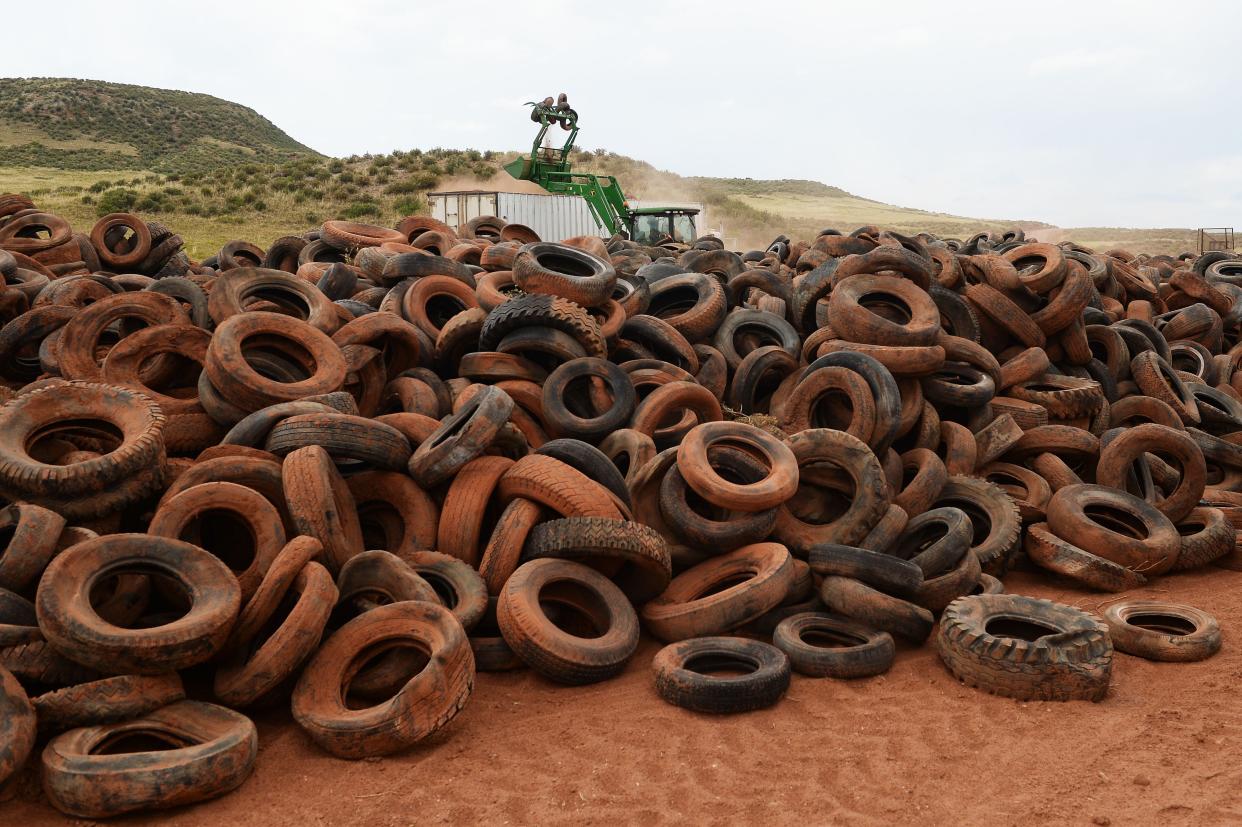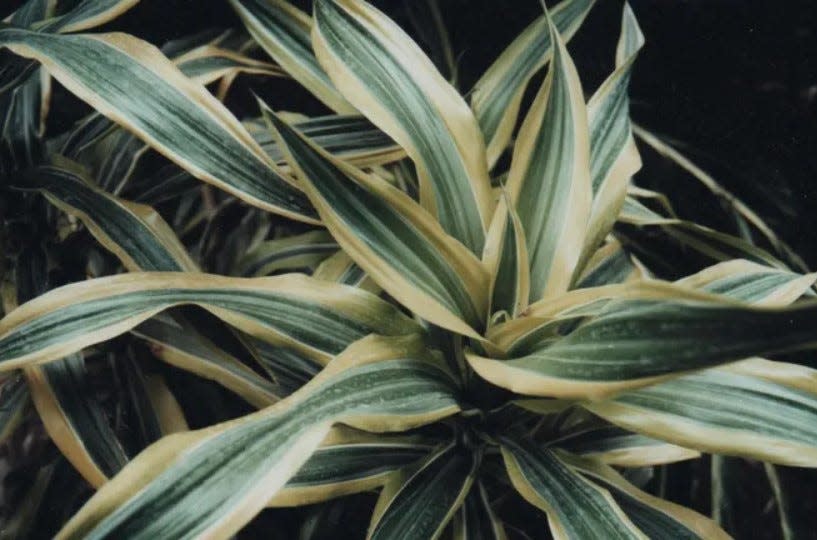Thinking about rubber mulch? Don't do it. It leaches heavy metals and offers no nutrients

American drivers wear out nearly 300 million tires annually. That’s a lot of rubber to find a use for. One solution is to shred it, dye it, spread it around plants and call it mulch.
But wait! Rubber mulch smells like rubber, especially when it’s hot. Even worse, rubber – a petroleum product – can catch fire from a smoldering cigarette. Also – like organic mulches – it fades over time.
What about its effect on plants and soil? Studies have shown that this abominable mulch leaches heavy metals (such as cadmium, chromium, aluminum and zinc) into the ground. Could our aquifer be in danger? Finally, rubber mulch – which is banned in several countries – provides zero nutrients for plants, and it doesn’t improve the soil’s ability to hold nutrients in the root zone.
Remember: most established landscape plants that are kept mulched with organic products (such as pine bark and pine straw) never require fertilization.
Dwarf Dracaena is a nearly perfect houseplant
Golden Hahnii is a small, low-maintenance houseplant that’s remained popular through the decades.
It’s a dwarf form of Dracaena trifasciata (formerly Sansevieria trifasciata) from West Africa, and a real charmer that grows just four to seven inches tall in sun or filtered light. It features short, broad leaves with a soft-green center stripe bordered by yellow and green margins.
Golden Hahnii is a clumping plant that spreads by rhizomes that can – in time – split soft-sided containers, so take heed. In any case, small, shallow, clay pots are best for this semi-succulent species, which is content even when it becomes root bound.
Among the world’s most water-thrifty plants, Golden Hahnii specimens do fine with monthly irrigation. Of course, specimens buffeted by air from vents demand more frequent irrigation. Similarly, plants in sun need more water than plants in shade. Propagate by removing plants from their pots and using a sharp knife to divide them. They can also be propagated by leaf cuttings.
In addition to being an attractive indoor plant, research conducted by NASA determined that this species – as well as its kin – removes airborne toxins such as formaldehyde and benzine that are commonly found in homes.
Wilted plants not usually a cause for concern
The old saying that "Plants tell you when they need water by wilting" is frequently wrong. While plants don’t perspire as people do, they lose considerable moisture through their leaves in a process called transpiration. That’s why even well-irrigated plants might wilt during hot, sunny, breezy days: The plants are losing moisture faster than the roots can absorb it from the soil.
Plant to ponder: Song of India

A great plant for filtered light, Song of India is a shrubby, sprawling plant from Madagascar. The species (Dracaena reflexa) grows up to 15 feet tall and features flexible, curving stems. Propagate with warm-season cuttings.
This article originally appeared on The Ledger: Considering rubber mulch? Don't do it. Your plants need organic mulch

